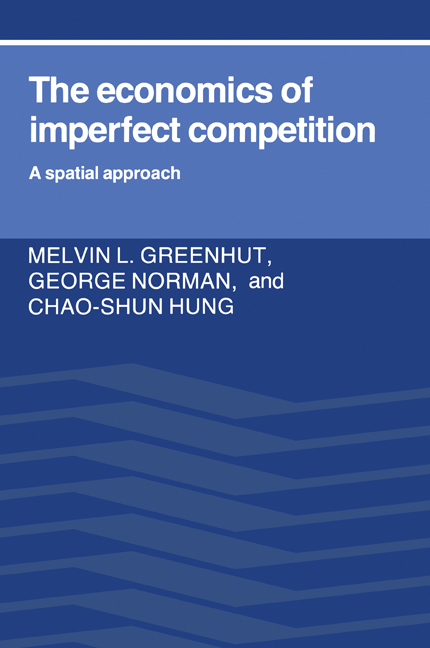The Economics of Imperfect Competition
This book takes a different approach to traditional price theory and to the analysis of imperfect competition. It represented a breakthrough in the development of a 'new' microeconomic theory. Increasingly, it has been recognized that the perfectly competitive paradigm is inappropriate to the explanation of pricing behaviour in many 'real life' markets characterized by a significant separation between producers and consumers. The spatial perspective adopted by the authors provides a natural separation of markets, but provides as well a powerful analogy for apparently nonspatial issues such as product differentiation, pricing over time, problems of storage and transportation, and the economics of intraindustry trade and of the multinational enterprise. A major concern of The Economics of Imperfect Competition: A Spatial Approach is to make these analogies explicit by applying this spatial analysis to a wide variety of nonspatial problems.
Product details
January 1987Paperback
9780521315647
432 pages
229 × 152 × 24 mm
0.58kg
114 b/w illus. 20 tables
Available
Table of Contents
- List of figures and tables
- Preface
- 1. Introduction
- Part I. Nondiscriminatory Pricing:
- 2. A general theory of imperfect competition and nondiscriminatory pricing: the short run
- 3. A general theory of imperfect competition and nondiscriminatory pricing: the long run
- 4. Nondiscriminatory prices, economic development, and merger policies
- 5. Product differentiation: a spatial f.o.b. perspective
- Part II. Discriminatory Pricing:
- 6. Discriminatory pricing and alternative demand conditions
- 7. Alternative pricing policies
- 8. Discriminatory pricing and market overlap
- 9. Intraindustry trade: a spatial approach
- 10. Optimal pricing with delivered-price or transport constraints
- 11. International and intranational pricing with a general cost function: an introduction to optimal-control theory
- 12. Dynamic market strategy: further application of optimal-control theory
- 13. Heterogeneous prices and heterogeneous goods
- 14. Empirical findings on alternative pricing policies: demand and competitive impacts
- Part III. Pricing, Location, and Competition:
- 15. General location and market-area principles
- 16. Pricing, demand distribution, and location choice
- 17. Optimal location in nonspatial markets: a spatial approach
- 18. Competition, free entry, and long-run profit
- 19. An efficient long-run allocative equilibrium
- 20. Long-run locational equilibrium
- 21. Epilogue
- Notes
- Bibliography
- Author index
- Subject index.







